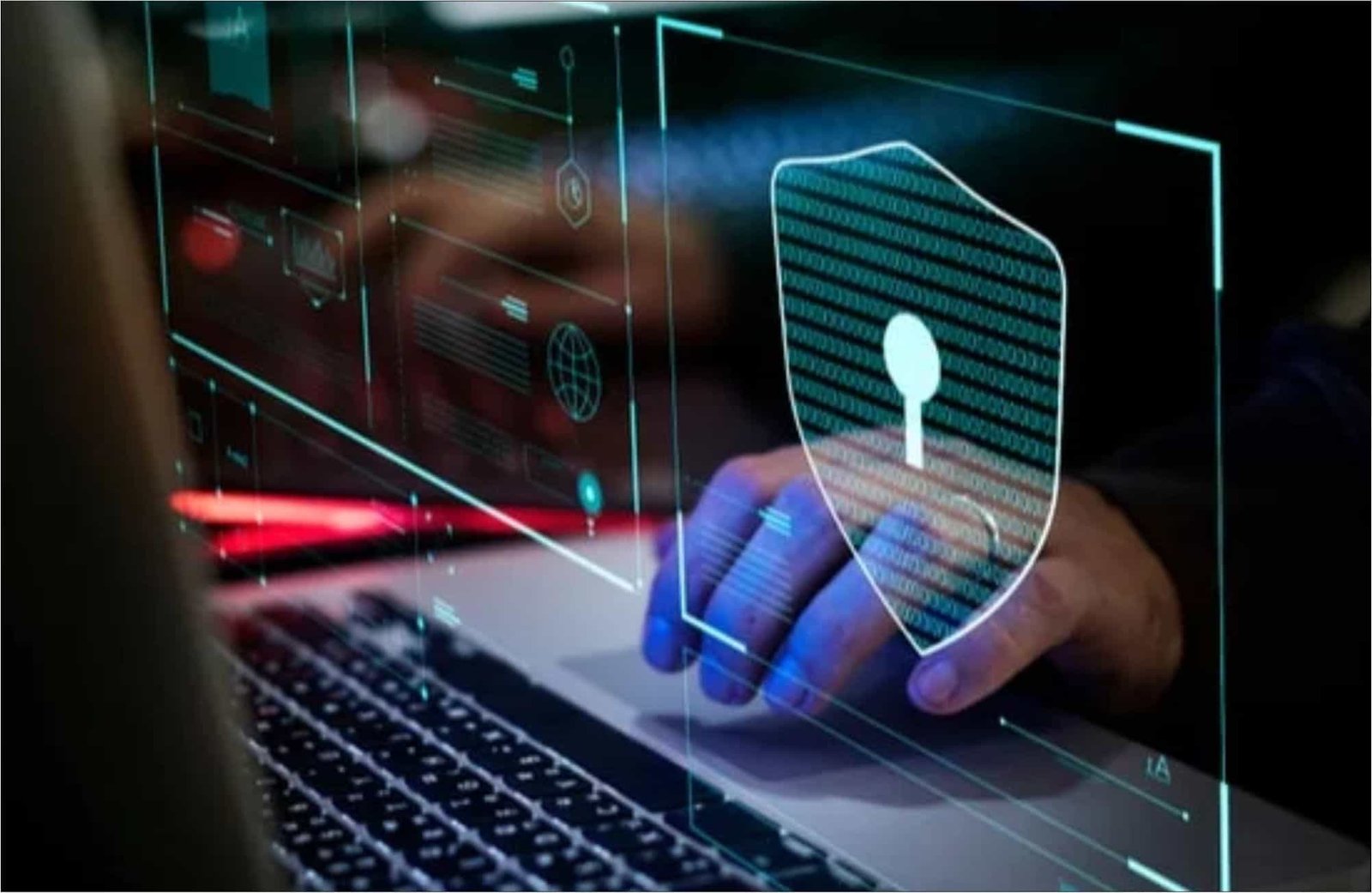In the digital age, where data has become the new currency, the importance of cybersecurity cannot be overstated. Cyber threats are a looming concern for individuals, businesses, and governments alike. To address this pressing issue, it’s crucial to first understand what cybersecurity is, why it’s essential, and how you can protect yourself and your organization. In this comprehensive guide, we’ll delve into the world of cybersecurity, exploring its various aspects and highlighting its paramount importance.
Table of Contents:
-
Introduction
- Understanding Cybersecurity
- Why Cybersecurity Matters
-
Types of Cyber Threats
- Malware
- Phishing
- Ransomware
- DDoS Attacks
- Insider Threats
-
Importance of Cybersecurity
- Protecting Sensitive Information
- Safeguarding Privacy
- Ensuring Business Continuity
- Upholding Reputational Integrity
- Complying with Legal and Regulatory Requirements
-
Cybersecurity Best Practices
- Strong Passwords
- Regular Software Updates
- Data Encryption
- Multi-Factor Authentication
- Employee Training
-
The Role of Cybersecurity Professionals
- Ethical Hackers (White Hat Hackers)
- Incident Responders
- Security Analysts
- Security Engineers
-
Emerging Trends in Cybersecurity
- Artificial Intelligence and Machine Learning
- Internet of Things (IoT) Security
- Cloud Security
- Blockchain Technology
- Quantum Computing Threats
-
Cybersecurity on a Personal Level
- Securing Your Home Network
- Safe Online Practices
- Protecting Your Devices
- Social Media Safety
- Online Shopping and Banking
-
Cybersecurity for Businesses
- Risk Assessment
- Security Policies and Procedures
- Security Training and Awareness
- Incident Response Plan
- Cyber Insurance
-
Government and Cybersecurity
- National Cybersecurity Strategies
- Cybersecurity Legislation
- International Cooperation
-
The Future of Cybersecurity
- The Ongoing Arms Race
- Ethical Considerations
- Cybersecurity and Artificial Intelligence
Introduction
Understanding Cybersecurity
Cybersecurity is the practice of protecting computer systems, networks, and data from theft, damage, or unauthorized access. It encompasses a wide range of technologies, processes, and practices designed to safeguard digital information and maintain the confidentiality, integrity, and availability of data. In a world where nearly every aspect of our lives is interconnected and reliant on digital technologies, the need for effective cybersecurity has never been more critical.
Why Cybersecurity Matters
The digital landscape is fraught with threats that can wreak havoc on individuals, businesses, and governments. Cyber attacks can result in data breaches, financial loss, damage to reputation, and even pose risks to national security. The importance of cybersecurity lies in its capacity to protect against these threats and ensure the smooth functioning of our increasingly interconnected world.
Types of Cyber Threats
Understanding the types of cyber threats is fundamental to grasping the significance of cybersecurity. Here are some of the most common cyber threats that individuals and organizations face:
Malware
Malware, short for malicious software, is a broad category that includes viruses, worms, Trojans, and spyware. These malicious programs can infect computers and networks, compromising data and system integrity.
Phishing
Phishing is a technique that involves tricking individuals into revealing sensitive information, such as login credentials or credit card numbers. Phishing attacks typically occur via email or deceptive websites.
Ransomware
Ransomware encrypts a victim’s data, rendering it inaccessible until a ransom is paid to the attacker. These attacks can be devastating for individuals and organizations alike.
DDoS Attacks
Distributed Denial of Service (DDoS) attacks involve overwhelming a target system or network with an influx of traffic, rendering it inaccessible. DDoS attacks can disrupt online services and cause financial losses.
Insider Threats
Insider threats occur when current or former employees, contractors, or business partners exploit their access to an organization’s data or systems for malicious purposes. These threats can be challenging to detect and prevent.
Importance of Cybersecurity
The importance of cybersecurity is multifaceted, impacting individuals, businesses, and governments in various ways. Let’s explore some of the key reasons why cybersecurity is paramount:
Protecting Sensitive Information
In an era where vast amounts of personal and sensitive information are stored electronically, safeguarding this data is of utmost importance. This includes personal information, financial records, medical data, and proprietary business information. Cybersecurity measures are necessary to prevent data breaches and the unauthorized access or theft of such sensitive information.
Safeguarding Privacy
The digital world has created a web of interconnected devices and services, making it easier for personal information to be collected and exploited. Cybersecurity ensures that your privacy remains intact by protecting your online identity and personal data from prying eyes.
Ensuring Business Continuity
Businesses are increasingly reliant on digital technologies to operate efficiently. Cyber attacks can disrupt operations, resulting in financial losses and reputational damage. Robust cybersecurity measures are essential for business continuity, ensuring that operations continue without interruption.
Upholding Reputational Integrity
A data breach or security incident can severely damage an individual’s or organization’s reputation. Consumers and clients are more likely to trust businesses and individuals that demonstrate a commitment to safeguarding data. Cybersecurity is, therefore, an essential element of brand protection.
Complying with Legal and Regulatory Requirements
Various laws and regulations mandate data protection and cybersecurity measures. Non-compliance can result in severe penalties. Adhering to legal and regulatory requirements is crucial for avoiding legal issues and maintaining trust with stakeholders.
Cybersecurity Best Practices
Now that we understand the importance of cybersecurity, let’s explore some best practices that individuals and organizations can implement to protect themselves against cyber threats.
Strong Passwords
Passwords are often the first line of defense against unauthorized access. Create strong, unique passwords for each account and consider using a password manager to keep track of them.
Regular Software Updates
Software updates often include patches for known security vulnerabilities. Keeping your operating systems and software up to date helps protect against exploits.
Data Encryption
Encrypt sensitive data to protect it from unauthorized access. Encryption scrambles data into a format that can only be read by someone with the decryption key.
Multi-Factor Authentication
Implement multi-factor authentication (MFA) wherever possible. MFA requires users to provide two or more forms of verification before granting access, adding an extra layer of security.
Employee Training
Educate employees on cybersecurity best practices. Human error is a common factor in security breaches, and employee training can reduce the likelihood of incidents.
The Role of Cybersecurity Professionals
Cybersecurity professionals are on the front lines of defense against cyber threats. Here are some key roles in the field:
Ethical Hackers (White Hat Hackers)
Ethical hackers use their skills to identify and address vulnerabilities in systems and networks. They work to strengthen security by finding and fixing weaknesses.
Incident Responders
Incident responders are responsible for handling security incidents and breaches. They investigate and mitigate the impact of cyber attacks.
Security Analysts
Security analysts monitor an organization’s systems for signs of breaches or vulnerabilities. They are responsible for analyzing data and identifying potential threats.
Security Engineers
Security engineers design and implement security systems and measures. They create the infrastructure that protects against cyber threats.
Emerging Trends in Cybersecurity
The field of cybersecurity is dynamic, continually evolving to combat new threats. Several emerging trends are shaping the future of cybersecurity:
Artificial Intelligence and Machine Learning
AI and machine learning are being used to detect and respond to threats in real-time. These technologies can analyze vast amounts of data to identify patterns indicative of cyber attacks.
Internet of Things (IoT) Security
As more devices become interconnected, securing the Internet of Things is increasingly important. Weaknesses in IoT devices can be exploited to gain access to networks.
Cloud Security
With the migration of data and services to the cloud, ensuring the security of cloud-based systems is a top priority. Cloud security measures are critical for protecting data.
Blockchain Technology
Blockchain is being used to secure transactions and data. Its decentralized nature makes it resistant to tampering and fraud.
Quantum Computing Threats
Quantum computers have the potential to break current encryption methods. Researchers are working on post-quantum cryptography to ensure future security.
Cybersecurity on a Personal Level
Individuals must also take responsibility for their cybersecurity. Here are some practices for securing your digital life:
Securing Your Home Network
Ensure your home Wi-Fi network is protected with a strong password. Regularly update your router’s firmware and consider using network segmentation to isolate IoT devices.
Safe Online Practices
Practice safe online behavior. Be cautious about clicking on links in emails or downloading attachments from unknown sources. Verify the authenticity of websites before entering sensitive information.
Protecting Your Devices
Keep your devices, including smartphones and computers, up to date with the latest security patches. Use antivirus software and enable firewalls.
Social Media Safety
Be mindful of the information you share on social media. Avoid oversharing personal details and review your privacy settings.
Online Shopping and Banking
When conducting financial transactions online, ensure you’re using secure, reputable websites. Look for “https://” in the URL and check for the padlock symbol in the address bar.
Cybersecurity for Businesses
Businesses face unique cybersecurity challenges, and protecting sensitive customer data is a top priority. Here are some essential practices for businesses:
Risk Assessment
Conduct a comprehensive risk assessment to identify vulnerabilities and potential threats. This assessment helps prioritize security measures.
Security Policies and Procedures
Develop and implement security policies and procedures to guide employees in secure practices. Ensure data classification and access controls are in place.
Security Training and Awareness
Regularly train employees on security best practices and raise awareness about the latest threats. An informed workforce is a critical component of cybersecurity.
Incident Response Plan
Create an incident response plan that outlines steps to take in the event of a security incident. Timely and effective response is crucial to minimizing damage.
Cyber Insurance
Consider cyber insurance to provide financial protection in the event of a security breach. This coverage can help mitigate the costs of a breach.
Government and Cybersecurity
Governments play a significant role in establishing cybersecurity standards and regulations. Here’s how governments are involved in cybersecurity:
National Cybersecurity Strategies
Many nations have developed national cybersecurity strategies to protect critical infrastructure and respond to cyber threats.
Cybersecurity Legislation
Governments pass legislation to enforce data protection and cybersecurity measures. Compliance with these laws is mandatory for organizations.
International Cooperation
Cyber threats are often cross-border, and international cooperation is essential in tracking and prosecuting cybercriminals. Governments collaborate to combat cybercrime.
The Future of Cybersecurity
The future of cybersecurity is marked by ongoing challenges and opportunities:
The Ongoing Arms Race
As cybersecurity measures evolve, so do the tactics of cybercriminals. The battle between security professionals and attackers is an ongoing arms race.
Ethical Considerations
As technology advances, ethical questions arise. Issues like surveillance, privacy, and digital rights will continue to be central in cybersecurity discussions.
Cybersecurity and Artificial Intelligence
Artificial intelligence and machine learning will play a more prominent role in identifying and responding to threats. These technologies will become critical components of security.
Conclusion
Cybersecurity is a critical pillar of our digital age. It safeguards our data, our privacy, and the functioning of our interconnected world. Understanding the importance of cybersecurity and implementing best practices is essential for individuals, businesses, and governments. As cyber threats continue to evolve, so must our approach to cybersecurity. By staying informed and proactive, we can navigate the digital landscape securely and protect our digital assets from harm. Whether you’re an individual or a part of a large organization, cybersecurity is a shared responsibility that demands attention and action.



